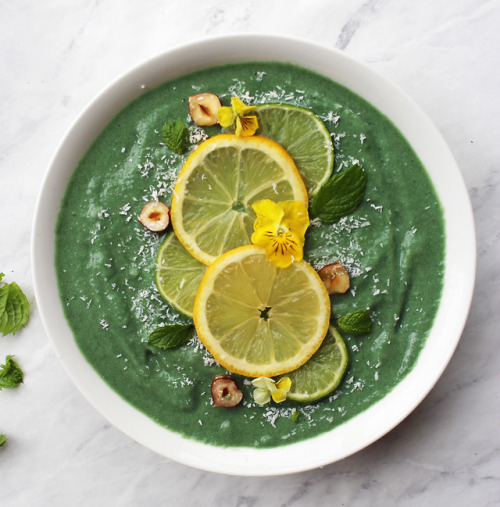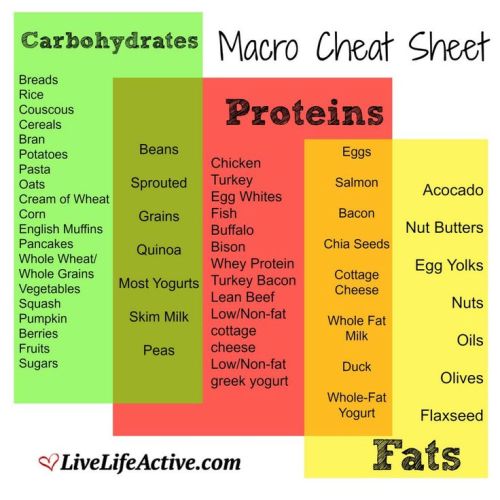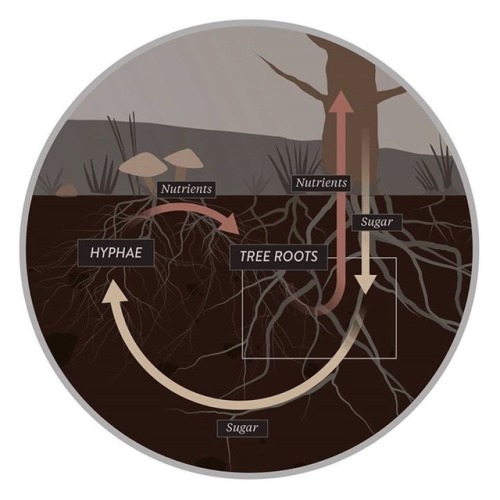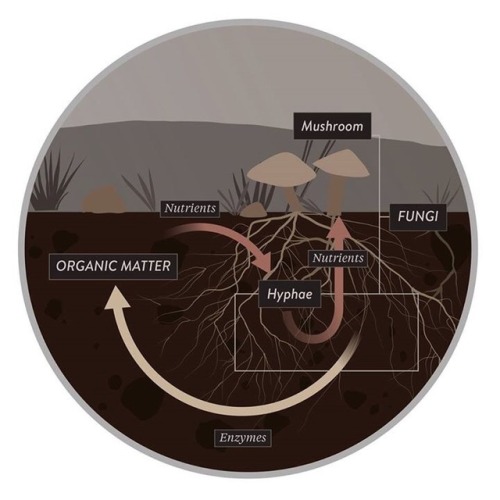#nutrients
Plants vs Floods!
Excessive rain can be a nuisance, but for agriculture and our economy, it can be a crisis.
Excessive rain creates excessive run-off, and very important things are simply washed away – damaging the land.
However, a collaboration of BBSRC-funded scientists came up with a new type of grass which develops huge roots. These huge roots change the structure of the soil, allowing it to hold much more water than usual.
This innovation can reduce water run-off by up to 51%, so that nutrient-rich topsoil can be protected.
This is one way scientists are making plants do amazing things.
For more amazing plant science, visit: www.bbsrc.ac.uk./plantpower
Some plants such as lettuce require cool conditions for germination (<10 oC), a condition known as thermo-dormancy. This reflects the evolution of the wild parent species in cooler environments and growth cycles limited by higher summer temperatures. Transforming live but dormant seed into new healthy self-sufficient plants requires care and planning. The conditions in which seed is stored before use greatly affect the vigour and quality of plants post-germination. Seed which is stored too long or in unsuitable environments deteriorates resulting in unthrifty seedlings.

Aged seed
Seed is either sown directly into soil or into compost designed especially as an aid for germination. These composts contain carefully balanced nutrient formulae which provide larger proportions of potassium and phosphorus compounds which promote rooting and shoot growth. The amounts of nitrogen needed at and immediately post-germination are limited. Excess nitrogen immediately post-germination will cause over-rapid growth which is susceptible to pest and pathogen damage.
Minor nutrients will also be included in composts which ensures the establishment of efficient metabolic activities free from deficiency disorders. Composts require pH values at ~ 7.0 for the majority of seedlings unless they are of calicifuge (unsuited for calcareous soils) species where lime requirement is limited and the compost pH will be formulated at 6.0. Additionally, the pC will be carefully tuned ensuring correctly balanced ionic content avoiding root burning disorders. Finally, the compost should be water retentive but offering a rooting environment with at least 50 percent of the pore spaces filled with air. Active root respiration is essential while at the same time water is needed as the carrier for nutrient ions.
Seedlings encountering beneficial environments delivering suitable temperatures will germinate into healthy and productive plants.

Healthy seedlings
Some plants such as lettuce require cool conditions for germination (<10 oC), a condition known as thermo-dormancy. This reflects the evolution of the wild parent species in cooler environments and growth cycles limited by higher summer temperatures.
Careful husbandry under protection such as in greenhouses provides plants which can be successfully transplanted into the garden. The soil receiving these should be carefully cultivated, providing an open crumb structure which permits swift and easy rooting into the new environment. It is essential that in the establishment phase plants are free from water stress. Measures which avoid predation from birds such as pigeons may also be required.

Pigeon feeding
Netting or the placing of cotton threads above plants helps as a protection measure. Weeds must be removed otherwise competition will reduce crop growth and encourage pests and diseases, particularly slug browsing. Finally, the gardener will be rewarded for his/her work with a fruitful and enjoyable crop!
Written by: Professor Geoff Dixon, author of Garden practices and their science (ISBN 978-1-138-20906-0) published by Routledge 2019.
A smoothie a day keeps the doctor away
This one was made with 1 frozen banana, mango, fresh mint, spinach, a dash of lemon and lime juice and 1 cup of coconut water and lets be real I poured it into a cup to drink after taking the photo
insta: @veganzoejessica
Post link
JUICING VS. BLENDING: WHICH ONE IS BETTER?
Does one offer more health benefits than the other? Juices and smoothies both play an important role in any wellness program and both juicing and blending are very beneficial, but in different ways.
What’s The Difference?
JUICING
Juicing is a process which extracts water and nutrients from produce and discards the indigestible fiber.
Without all the fiber, your digestive system doesn’t have to work as hard to break down the food and absorb the nutrients. In fact, it makes the nutrients more readily available to the body in much larger quantities than if you were to eat the fruits and vegetables whole.
This is especially helpful if you have a sensitive digestive system or illness that inhibits your body from processing fiber. The fiber in produce helps slow down the digestive process and provides a steady release of nutrients into the blood stream.
Freshly squeezed vegetable juices form part of most healing and detoxification programs because they are so nutrient rich and nourish and restore the body at a cellular level.
A word of caution: When you remove the fiber from the produce, the liquid juice is absorbed into your blood stream quickly. If you are only juicing fruits, this would cause a rapid spike in blood sugar and unstable blood sugar levels can lead to mood swings, energy loss, memory problems and more!
Fiber is also filling and without fiber in the juice, some people tend to get hungry again quickly.
BLENDING
Unlike juices, smoothies consist of the entire entire fruit or vegetable, skin and all and contain all of the fiber from the vegetables.
However, the blending process breaks the fibre apart (which makes the fruit and vegetables easier to digest ) but also helps create a slow, even release of nutrients into the blood stream and avoids blood sugar spikes. Smoothies tend to be more filling, because of the fiber, and generally faster to make than juice, so they can be great to drink first thing in the morning as your breakfast, or for snacks throughout the day.
By including the fiber in your smoothie, the volume will increase. Also, you can pack more servings of fruits and veggies into a single serving of juice than you can into a smoothie.
Juicing and Blending Rules
1. It’s best not to combine fruits and vegetables (unless it’s apple). This can affect how well your digestive enzymes function.
This doesn’t seem to matter too much in green juices and smoothies, but vegetables like carrots, beetroots, broccoli and zucchini don’t combine well with fruit due to their high starch content. In his book Food Combining Made Easy, Dr. Herbert Shelton explains that starchy foods have to be eaten alone because starches are digested with enzymes different from those used for any other food group. Combining starchy foods with fruit may cause fermentation and gas. However, Dr. Shelton found that green leafy veggies combine well with pretty much everything.
2. Try to drink your juice or smoothie straight away. After 15 minutes, light and air will destroy much of the nutrients. If you can’t drink it straight away, transfer to a dark airtight container until you’re ready.
Using The Right Equipment
To get the most benefit from your juices and smoothies, it’s important to use the right equipment. Invest in a good-quality juicer. Cheaper, centrifugal juicers introduce heat and oxygen and destroy the enzymes and nutrients in your fruits and vegetables. While it may cost you a bit more initially, a premium cold-press juicer will produce a superior-quality juice and allow you to extract more from your fruit and vegetables, saving expense in the long-term.
The machines themselves will also generally last longer. In contrast to the rough extraction of centrifugal juicers, mastication or cold-press juicers compress fruit and vegetables to ‘squeeze’ out their juice.
The same goes for a blender. You want a blender that is gentle on your produce and doesn’t heat up the enzymes as it’s pulling apart the fibres.
Text via Food Matters
Photo viaSpell Designs
Post link
*Batidos quema grasa, pierde 4 kilos en 1 semana*
Les recomiendo estos batidos si lo que quieren es perder peso son muy ricos.! http://www.alobelleza.com/2016/02/batidos-quema-grasa-pierde-4-kilos.htmlPost link
The best times to take vitamins and supplements
→http://ecogreenlove.com/?p=13960Most people take their supplements at a time that is convenient to them. However, some nutrients work best when taken at different times of day. Check out this guide to when it’s best to take some of our most popular supplements.
-
#health #vitamins #foodsupplements #healthtips
#nutrients #minerals #supplements #probiotics #calcium #magnesium #zinc #iodine #vitaminb #iron #fishoils #vitaminc #healthcare #wellness #wellbeing #diet
Post link
You will eat ze bugs


I love these beautifully created diagrams that explain the relationship plants, soul and fungi have… its an amazing world living right underneath the ground we walk on.
Post link
Please stop using healthy as a synonym for low calorie. They are not the same thing. Thanks.
Feed Cannabis Plants for $5 with these Organic Plant Fertilizers, Nutrients ,and Foods
I will be Showing You some of the Cheapest Organic ,and NON GMO Plant Supplements that, You can Make Yourself, From Your Own Pantry, All for About $5 total.
Post link
Some time ago, the news that “the babysitter slapped a one-year-old child and pinched his nose to pour the rice paste to risk suffocation” triggered another heated discussion among netizens. In fact, in addition to the weak moral quality and legal awareness of the nanny in this incident, the lack of “nutrition literacy” is even more shocking.
Because “eating rice cereal for a one-year-old baby” is completely a nutrition blind behavior. In fact, babies over 1 year old already have the ability to chew food. Toddlers at this age should transition from complementary food to the stage of eating family food with their families. The food they eat is no longer mushy. . So having said that, when the baby has started to eat solid-based meals, but you suddenly degenerate into rice cereal, can the baby cooperate well?
In fact, taking care of infants is a technical job that requires the guidance of scientific methods. We should follow the total dietary principle of “one to many, from less to more, from thin to thick, gradually”, and provide food suitable for the needs of the baby’s different physiological stages according to the changes of the baby’s age.
6 months old: Start adding semi-solid foods, such as rice paste, vegetable puree, fruit puree, egg yolk puree, fish puree, etc.
7-9 months old: It can gradually transition from semi-solid food to chewable soft solid food, such as rotten noodles, shredded vegetables, whole eggs, and minced meat.
10-12 months old: Most babies can gradually switch to a diet based on solid food.
Children over one year old: Choose nutritious, easy-to-digest, and diverse ingredients, adopt appropriate cooking methods, and individually process homemade meals.
Click here for more information about health care of infants.
Pneumonia, anemia, rickets, and diarrhea are the four common diseases in pediatrics. Among them, anemia and rickets are nutritional diseases, which are mostly related to improper feeding. Wang Yuting, a pediatrician at Taiyuan Maternity and Child Health Hospital, said that supplementary food should be added according to the order from thin to thick (juice-mud, rice soup-porridge, fruit and vegetable-meat), from less to more, from fine to coarse, from one to many in principle.
“Don’t add supplementary food too early, it is harmful to the baby.” Wang Yuting reminded that babies within 3 months of age have imperfect digestion of cereals, delicate digestive organs, underdeveloped digestive glands, and poor digestion (such as lack of amylase) and do not have digestive supplements.
Adding too early will increase the burden on the baby’s digestive function, and the indigestible complementary food will stay in the abdomen to “ferment”, causing abdominal distension, constipation, anorexia, increasing the frequency of bowel movements and finally leading to diarrhea. Phytic acid in cereals will combine with the iron that is not much in breast milk and precipitate, which affects the baby’s absorption of iron in breast milk and leads to anemia. When a baby is full of foods such as rice cereal, the amount of breast milk sucked will decrease accordingly, leading to a gradual decrease in breast milk secretion.
Children cannot express themselves, how can parents judge that the baby is full? Wang Yuting said that under normal circumstances, parents can observe from these four aspects:
1. Breastfeeding babies urinate at least 6 times a day.
2. The baby has normal stools, 2 times a day, in a golden paste.
3. After the baby eats milk, he can sleep quietly or play without crying or making noise.
4. The baby gradually gains weight, gaining 500-1000 grams per month.













